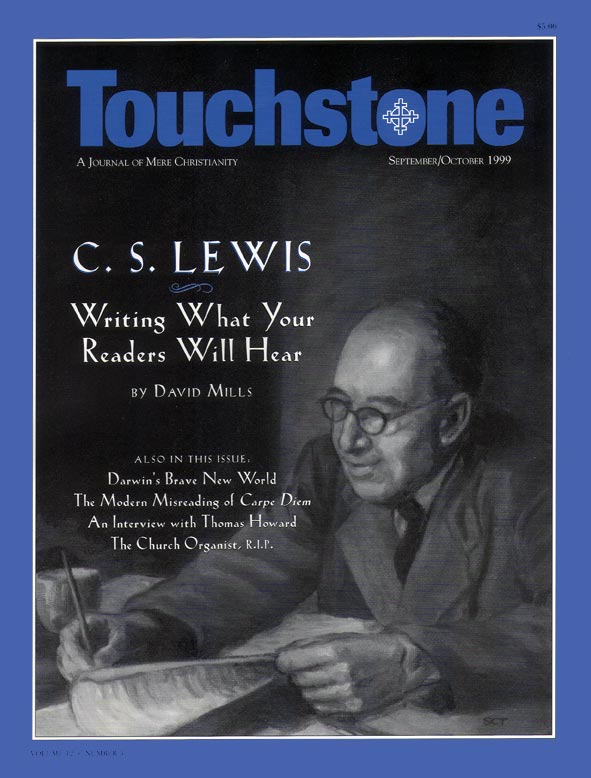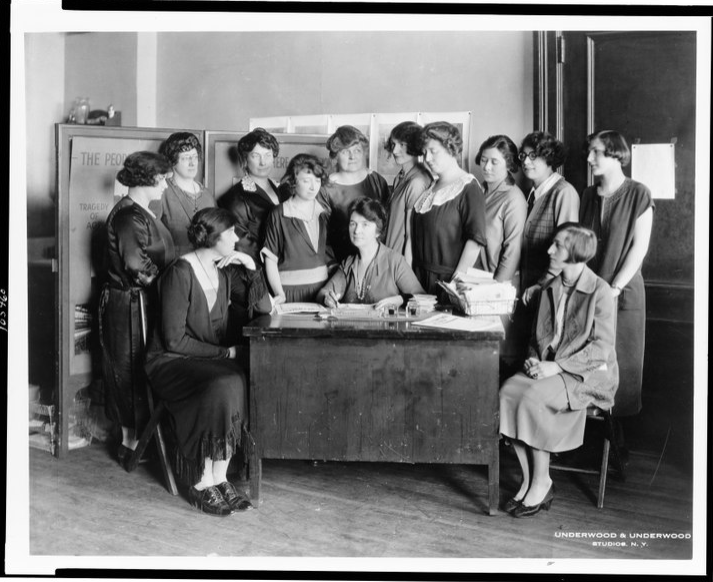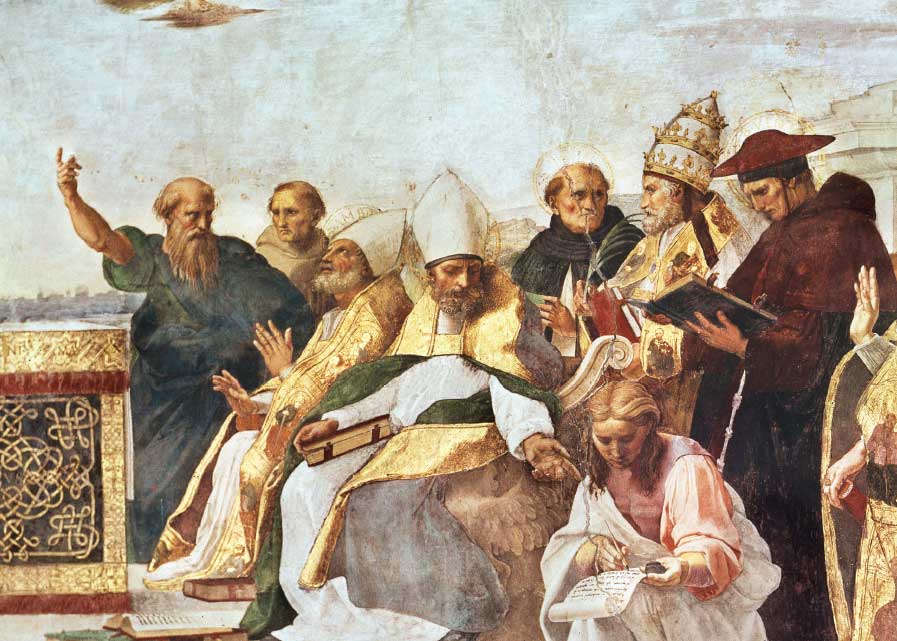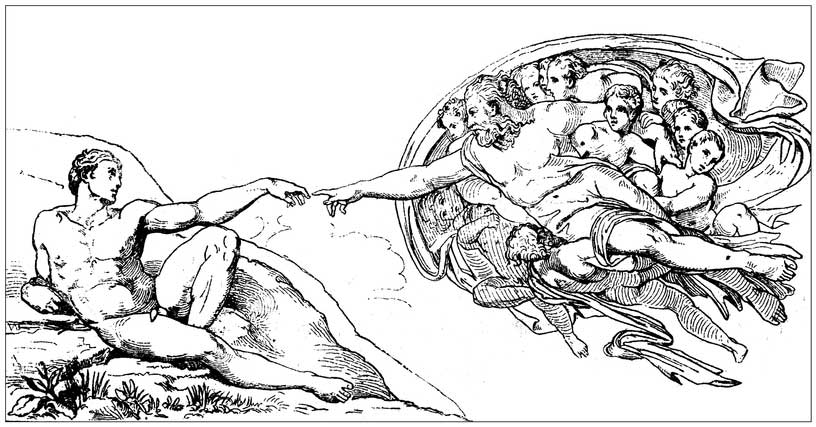Writing What Your Readers Will Hear
C. S. Lewis, Analogy & the Lay Mind
by David Mills
A few months ago I was standing by the book table at a theological conference, looking down at the row of C. S. Lewis’s apologetic works displayed for sale, when the young woman standing beside me said to a friend, in a somewhat lofty voice, “Oh, they’re not very imaginative. I don’t think you’d like them.” Patronizing Lewis is a sign of sophistication in some circles, but that his works were not imaginative was still a peculiar charge to make against him. With the apologetic writings of G. K. Chesterton and Dorothy Sayers, his are the most imaginative of this century.
In particular, he was, like them, so extraordinarily effective in presenting the Christian faith because he had the great imaginative gift of drawing analogies. Through analogies that illuminated the obscure, abstract, and mysterious, Lewis brought understanding to those who are either untrained for or incapable of reading theology in its traditional form. Through analogies Lewis made theology public. Through them he brought theology to the lay mind—at least to those laymen, by all signs a minority, willing to take it.
Analogy Defined
I mean by analogy the statement of some significant similarity between two things, one common and obvious and the other obscure or supernatural or mysterious, using “factors within our experience so that they become pointers to something outside our experience,” as Lewis put it in his essay “The Language of Religion.”1 In his book On the Place of Gilbert Chesterton in English Letters, Hilaire Belloc called this “parallelism,” the “illustration of some unperceived truth by its exact consonance with the reflection of a truth already known and perceived.”2
Analogies translate abstractions and propositions into images we can bring to mind, and thereby make the mysterious comprehensible and even familiar. Lewis’s analogies do what he said his stories were intended to do: they help the writer “steal past those watchful dragons” of the truth’s “stained glass and Sunday school associations.”3
In doing so they do not prove, though they may sometimes convince, or at least bring conviction to those inclined to believe. Analogy does not make the argument—a writer will do his readers no favor by arguing from analogy to spare them the pain of following an argument out to the end—but it brings that insight or illumination or understanding or comprehension that allows the properly inclined soul to accept the argument and the conclusion.
Analogies are most needed when the Christian claims are hard to accept, and even more when they are hard even to apprehend. Liberal Christianity does not need them because it offers simple propositions no one is inclined to doubt (from which it draws false conclusions, for example, taking the truism that “God can’t be captured in words” as a reason for calling him “Mother”), but orthodox Christianity insists on mysteries beyond human understanding: that God is three and one, that Jesus was truly God and truly man, that God loves the world and allows terrible suffering. These are truths against which the mind rebels.
Good analogies make the “counter-intuitive” intuitive; they make some thoughts thinkable. And in a secular culture, in which the Christian claims are so eccentric, and to the secularized mind so evidently absurd, Christians need good analogies, because they assure them that they are not eccentric in relation to the truth. Good analogies help them see and feel that the implausible truths they believe are more plausible than they appear.
Analogies are tested by their fitness to the idea to be illumined and the degree to which they can be elaborated. A good analogy makes clear an obvious resemblance; a better one can be elaborated beyond the obvious resemblance, so that it illumines more aspects of the idea, is a more elaborate reflection. Their fitness is not always obvious, and depends on the reader’s knowledge of the truths being conveyed.
Lewis knew that analogies do not convey the complete or exact truth. They do not replace the technical language of theology, which is closer to what he called scientific language, but make thinkable the truths that language is trying to articulate.4 (I think this form of theology more important and more useful than Lewis granted, not least because it guards from error the sort of literary, analogical, or imaginative theology he practiced—for one thing, it gives some criterion for measuring the fitness of the analogy to the truth.)
In teaching the scientific laity, he explained in Mere Christianity, scientists offer them a picture of the subject but then warn them that the picture is not what scientists really believe about it. “What the scientists believe is a mathematical formula. The pictures are there only to help you to understand the formula. They are not really true in the way the formula is; they do not give you the real thing but only something more or less like it. They are only meant to help, and if they do not help you can drop them.” In religious matters, “if we found that we could fully understand it [a doctrine], that very fact would show it was not what it professes to be—the inconceivable, the uncreated, the thing from beyond nature.”5
An Apology
I apologize to rhetoricians for sloshing together analogy, metaphor, and simile, but “analogy” in the popular sense provides the single term needed. I am not discussing Lewis’s understanding of language, but only one of his apologetic methods, and here, as Lewis wrote in a similar paper, “My ideas about ‘communication’ are purely empirical,” and with him “I feel a little embarrassed by the simplicity and unexcitingness of the answer I want to give.”6
I am writing not as a scholar but as a working writer and editor who has for some years been trying to present substantive theology to interested Christians, and has discovered how very difficult is that task. Even people who have paid for your magazine or book decline, sometimes fiercely, to work their way through an argument. They are often happy to be told an idea is true or false, but they resist being shown. They will often accept on authority what they will not work out for themselves.
Lewis’s gift for creating analogies has not been much addressed by those writing on his work.7 Nor, indeed, did Lewis himself explain it. In his essays on apologetic writing—the work of presenting “that which is timeless (the same yesterday, today, and tomorrow) in the particular language of today”—he repeatedly stressed the necessity of the apologist’s learning the language of the people to whom he is speaking, because it is often very different from his, but he did not even mention the use of analogy as a way to convey difficult ideas.8
Lewis’s Gifts
Four aspects of Lewis’s gifts as a man, a scholar, and a writer help explain why he was so good at inventing useful analogies. At least the first three are required of anyone who would adopt the same method.
First, Lewis wrote precisely and accurately, which is much harder to do than most people realize, which is why so few people do it. He would not, for example, have used “impact” as a verb, because it utterly obscures the relation being described. That this impacted that does not tell you what this did to that. A compliment and a speeding truck may both impact you, but their effects are rather different. To write well one must be able to convey an idea to another mind exactly and with as little possibility of misunderstanding as one’s gifts will allow. To invent—which means to find—good analogies, one must write precisely.
Second, Lewis never used the jargon of his day and of his peers, and thereby avoided the corrupting influence of words that were both in fashion and carried with them fashionable ideas.9 He would not have used the word “text” to mean everything written or spoken, in the current academic fashion, because it imports, partially and quietly and under the table, the deconstructionist idea that all speech is without meaning and has only the meaning the reader decides to give it. Hamlet is not a play, and certainly not great literature; it is a text, as are romance novels, grocery lists, and the obscenities scrawled in men’s rooms in highway rest stops.
Jargon is easily absorbed, especially by academics and clerics, who are exquisitely sensitive to the movements—and to the vocabularies thereof—of the wider world. Why this is, I am not sure; perhaps their vulnerability to jargon reflects a mixture of a pastoral desire to speak the language of the people they are ministering to and an unhealthy desire to fit into the inner ring, inevitably of the enlightened and sophisticated, marked by the use of such jargon.
Lewis did not use such jargon, I think, because he was active in prayer and charity, an astute reader of his culture who was unusually sensitive to its peculiar language, and a courageous man willing to talk in ways of which his colleagues did not approve. The first gave him a clearer vision of himself and the world, the second a better understanding of the temptations he faced (to adopt the fashionable jargon, for example), and the third the willingness to speak as he should to his readers even when this carried a social and personal cost. Jargon marks the speaker as a member of the club, and Lewis was courageous enough not to join when joining meant a break with those to whom he was called to speak.
Academic jargon is sometimes a sort of professional’s shorthand, used to speak to people who know what you mean, but it can also obscure the truth and even distort it and even corrupt your own thinking. In either case, its use makes writing clearly to others much harder. To find good analogies, one must not habitually and especially unknowingly use the jargon of one’s peers or of the day.
Two Other Virtues
Third, Lewis translated intellectual debates and claims into the forms in which people were most likely to meet them. And meet them, of course, they do. People who have never heard of Feuerbach or the theory of projection know that “Religion is just a crutch.” This slogan is only Feuerbach put in popular language. People who have never heard of Freud have nevertheless heard that heaven is only “pie in the sky.” This is only Freud put as a suburban American would put it.
Academics and clerics trying to write for a popular audience will often popularize their writing by such techniques as identifying the people they are quoting, which is certainly better than quoting them without identifying them, but is not good enough. Though better than the bare “Feuerbach said” (which says to the reader who does not know who Feuerbach is that he does not belong in the discussion), “Feuerbach, the early nineteenth-century German philosopher, said” still intimidates the lay reader without increasing his understanding.
Lewis did not so much explain his terms in this way as rewrite the arguments completely, putting them in the words in which his readers heard them every day. The scholarly reader will recognize the allusions, and the lay reader will not be intimidated but have the relevance of the question impressed upon him. Lewis did this, I think, not just because he was a good writer but because he was a charitable man, who cared enough about others to see things as they saw them and to make the imaginative, empathetic effort to learn their language—in a way, I am afraid, many kindly and courteous academics do not.
He wrote in “Religion: Reality or Substitute?” for example: “Things do look so very much as if our whole faith were a substitute for the real well-being we have failed to achieve on earth. . . . After all, we do not usually think much about the next world till our hopes in this have been pretty well flattened out.”10 Lewis put the Freudian theory that a belief in heaven is a compensation for failure in this life in words everyone could understand, because almost everyone has thought this at some point in his life.
If Lewis had used the Freudian language, no matter how lucidly and with how many explanations and examples, many of his readers would have thought that he was only describing a debate among scholars and intellectuals, not a matter of relevance to their lives, and they would not have addressed the claim even though it is one they must sometime face. The word “Freud” or “projection” would have had some readers, and far more than we would like to think, putting down the book, some with relief that it is not, after all, for them. Put as Lewis did, the subject’s importance to them is obvious, and they will keep reading.
Lewis knew the world—the experiences, the assumptions, and the language—of the people to whom he was writing. To invent good analogies, one must ask and answer the questions in the forms people are asking them.
Finally, Lewis wrote personally, he wrote as himself—“I” appears far more often in Lewis’s work than most traditional composition teachers would tolerate—and to his readers as if he knew them. He wrote as one man speaking to another, in the context in which one naturally looks for analogies—when one says to a puzzled friend, “Well, you know, it’s like. . . .” To invent good analogies, one must be speaking from one’s experience, of realities one knows and wants to convey to others one knows well and cares for.
Lewis’s Analogies
Any reader of Lewis can supply examples of his analogies. In fact, unless I miss my guess, for most readers of Lewis their favorite passages from his apologetic works include a startling or clever or illuminating analogy, and they like them for the analogy. We remember his illustrations, not, for the most part, his arguments. Let me give four examples from the hundreds to be found in his books.
The first is taken from his essay “The Poison of Subjectivism.” In trying to explain why some people have such difficulty understanding the doctrine of the Trinity, a difficulty that will drive many away not only from trying to understand the doctrine but also from believing in it, Lewis described us as “Flatlanders,” two-dimensional people trying to understand three-dimensional objects. “Flatlanders attempting to imagine a cube, would either imagine the six squares coinciding, and thus destroy their distinctness, or else imagine them set out side by side, and thus destroy the unity. Our difficulties about the Trinity are of much the same kind.”11
The second is the famous image for the Church in the preface to Mere Christianity. Lewis described the relation of “mere Christianity” to the different Churches as
more like a hall out of which doors open into several rooms. If I can bring anyone into that hall I shall have done what I attempted. But it is in the rooms, not in the hall, that there are fires and chairs and meals. The hall is a place to wait in, a place from which to try various doors, not a place to live in. For that purpose the worst of the rooms (whichever that may be) is, I think, preferable.
Many wait in the hall a long time till they discover which room they should enter, but “even in the hall, you must begin trying to obey the rules which are common to the whole house. And above all you must be asking which door is the true one; not which pleases you best by its paint and paneling.”12
In the third example, Lewis counters with a mixture of analogies “the belief that reality never presents us with an absolutely avoidable ‘either-or’; that, granted skill and patience and (above all) time enough, some way of embracing both alternatives can always be found; that mere development or adjustment or refinement will somehow turn evil into good without our being called on for a final and total rejection of anything we should like to retain.” This belief is “a disastrous error,” Lewis writes, because in this world
every road, after a few miles, forks into two, and each of those into two again, and at each fork you must make a decision. . . . I do not think that all who choose wrong roads perish; but their rescue consists in being put back on the right road. A wrong sum can be put right: but only by going back till you find the error and working it afresh from that point, never by simply going on. Evil can be undone, but it cannot “develop” into good. Time does not heal it. The spell must be unwound bit by bit, “with backward mutters of dissevering power”—or else not.13
The fourth example is also taken from Mere Christianity. Lewis is explaining that when Jesus said that the married man and woman were to be “one flesh,” that “He was not expressing a sentiment but stating a fact—just as one is stating a fact when one says that a lock and its key are one mechanism, or that a violin and a bow are one musical instrument.” God forbids us to enjoy sex outside marriage, he continued, not because there is anything wrong with sexual pleasure, but because “you must not isolate that pleasure and try to get it by itself, any more than you ought to try to get the pleasures of taste without swallowing and digesting, by chewing things and spitting them out again.”14
How Lewis’s Analogies Work
These analogies illumine by showing a significant identity between two things, one we already understand and the other the obscurity or mystery (the doctrines of the Trinity and the Church, the nature of repentance, and—an obscurity to the modern mind if no one else’s—the limitations on sexual practice) Lewis needed to explain.
The first especially makes a thought thinkable, in this case how we can accept the reality of the Trinity even though we cannot conceive it in the way we conceive of everything else, and even though it does not seem to make sense. The analogy with the “Flatlanders” does not prove the reality of the Trinity, but it may bring conviction to someone held back from belief by thinking the doctrine of the Three in One contradictory or incomprehensible. It does so by giving a memorable picture of how limited we are, how we might be simply unable to see a reality rightly and therefore fumble about with contradictory images, all of which explain one aspect of the reality by distorting the others. It suggests that the problem with believing in the Trinity is not that it is incoherent but that we are finite, and thereby can move the inquirer held up by its apparent meaninglessness to the real reasons for believing in the doctrine.
The second illustrates Lewis’s gift for creating elaborate analogies, which continue to illuminate, and even refine the meaning, as more details are added. Lewis took a simple image, the Church as a house, which is a sort of translation of the image of the Church as a body, and showed what life in a house requires and therefore illuminated what life in the Church requires of us. Through it the man who dithers about refusing to join any particular Christian body might have the embarrassing vision of himself living in a hallway like a vagrant while others enjoy life in the rooms around him.
The third offers an alternative understanding of a Christian claim that breaks down a prejudice against it. It is logically weak, in not even attempting to prove that the world works the way Lewis describes it, but it first suggests a different way of understanding the moral life, as a journey on which one has to make choices, and then suggests that moral choices can only be repaired by doing them over, as errors in addition must be. It provides an image, taken from something any reader knows to be true, to make thinkable the readers’ moral intuition that moral choices form the character, if he has such an intuitive understanding of reality (if he does not, no argument will convince him that the world is as Lewis describes).
The fourth example, though like the third logically weak—there being no necessary relation between eating and sexual intercourse—can still help someone accept the idea that a pleasure may be given to us truly, but only as one part of a whole action. The reader who sees the act of chewing and then spitting out one’s food as a perversion of eating will more easily see that having sex and then divorcing one’s partner is a perversion of marriage.
Subversive Analogies
Lewis used analogy not only to explain the Christian teaching but also to undermine the claims made against it. Some skeptics asserted that a belief in the Moral Law is just “a social convention . . . put into us by education.” People who say this, Lewis wrote in Mere Christianity,
are usually taking it for granted that if we have learned a thing from parents and teachers, then that thing must be merely a human invention. But, of course, that is not so. We all learned the multiplication table at school. A child who grew up alone on a desert island would not know it. But surely it does not follow that the multiplication table is simply a human convention, something human beings have made up for themselves and might have made different if they had liked?15
Here the analogy makes certain thoughts thinkable by destroying the logical basis of the socially and culturally dominant, but anti-Christian, idea: by eliminating the illogical but plausible idea that for some people makes these thoughts unthinkable. He has not proved the reality of the Moral Law, but he has forced those who disbelieve in it because it is inherited from the past to prove that it is merely a social convention. He has made the debate fair, by eliminating the advantage the skeptics had taken.
Lewis also knew that analogies are used to win arguments without actually arguing them. In “The Poison of Subjectivism” he witheringly analyzed the rejection of an unchanging moral code (what he called the Tao) by the claim that holding to it “is to cut off all progress and acquiesce in ‘stagnation’.” No one wants to be stagnant, with its implications of stench and disease. “Let us strip it [this objection] of the illegitimate emotional power it derives from the word ‘stagnation,’ with its suggestion of puddles and mantled pools,” he wrote.
If water stands too long it stinks. To infer thence that whatever stands long must be unwholesome is to become the victim of a metaphor. Space does not stink because it has preserved its three dimensions since the beginning. The square of the hypotenuse has not gone moldy by continuing to equal the sum of the squares on the other two sides. Love is not dishonored by constancy and when we wash our hands we are seeking stagnation and “putting the clock back,” artificially restoring our hands to the status quo in which they began the day and resisting the natural trend of events which would increase their dirtiness steadily from our birth to our death.16
The Lay Mind
In these ways Lewis used analogy to bring theology to the lay mind. By the lay mind I mean Christians who are or should be studying theology—theology of the propositional and systematic sort—and in fact will read a bit, but not too much and usually only if asked by someone they want to please. (I am excluding those who cannot or will not study. They present a very different challenge to the teacher and apologist.) These people should, for example, understand the problem of evil and be able to articulate a Christian answer to their suffering or inquiring neighbor, and to some degree want to, and will start reading The Problem of Pain if their pastor tells them to, but they are not likely to finish it.
This describes the great mass of even active laity in conservative parishes in upper middle-class suburbs, that is, those who are most blessed with education, the leisure to study, and money for books and classes. The doctor who studied twelve or fourteen hours a day through college and medical school will be shocked to find that he is expected to spend half an hour a day reading a book of theology—even if he has asked for help in understanding the question he is supposed to read about. He will probably start Miracles, but he may not understand it and he may well not finish it. And yet in any discussion of the subject he will often insist on the equal value of his opinion with those who have studied it.
A friend who has a doctorate in theology was asked by people in his church, almost all successful doctors and lawyers and the like, to teach them theology. They wanted more teaching than they got on Sunday morning. He assigned Mere Christianity and hoped they would not assume that he did not think them smart enough for anything else. Two weeks later one of them called him to say that the group had unanimously decided to stop reading Mere Christianity because it was too hard.
That was bad enough. The group’s spokesman then told my friend that he (my friend) was an intellectual who liked this sort of thing, but that he did not have any sense of what laymen needed and what they could manage. They wanted to read something “less academic” and more “practical.”
Perhaps a sociologist or historian could explain this, but I really don’t know why so many people assume that mastering the content and duties of the Christian religion is supposed to be easy, so that people who will jog miles a day, go on near-starvation diets, deprive themselves of accustomed pleasures to pay for a new car or a vacation or a child’s college education, stay up into the morning hours reading for a night-school class, with dictionary, notebooks, and highlighters at hand and in use, will think reading Mere Christianity or The Problem of Pain too hard. People who have carefully and patiently worked through problem after problem in their own field assume that if a religious question can’t be answered immediately, it is not to be answered, at least by them.
Reaching the Lay Mind
Thus, at least in my observation, the lay mind. If the lay mind is like this, Lewis’s gift of inventing analogies is needed more today than when he wrote. Many laymen will rarely struggle with propositions and abstractions unless they are illustrated by and every argument made visible through analogy—unless the reader knows, as he slogs along, that illumination is waiting in the next paragraph or on the next page, unless he knows the writer will always use an analogy (or an equivalent, like a story or an anecdote) to make the thought thinkable.
As my friend found, even provided with analogies they may not persevere, may still think the effort too much for the return. But writing with analogies drawn from their everyday lives will lower the barriers to understanding and raise the chances of their reading all the way through. It gives them even less excuse to refuse to read theology and to think deeply about the Faith.
Some of these laymen are simply lazy and some have no compelling desire to know the truth, but some of them are confused and immobilized, their minds and wills frozen, because the subjects are so difficult and the costs of error so high. They are afraid to think about these things. To ask them to think about the nature of good and evil, or how Jesus could be God and man both, or whether the Holy Spirit proceeds from the Father or from the Father and the Son together is like asking them to play chess against a grandmaster for their and their family’s lives.
Others are confused and immobilized because the secular culture tells them that the Christian claims are absurd and self-justifying illusions, collective myths enlightened people no longer believe, indeed see through. This culture they absorb far more easily than the Christian culture, because it confronts them in a way the Christian culture does not—compare the time most Christians spend in church and study with the time they spend watching television. The secular culture trains them to feel, whatever they think they believe, that the story of the life, death, and resurrection of Jesus is ridiculous.
For these and probably other reasons, many laymen will not think about their faith. They will have theology, as I said, easily and quickly or not at all. And they will suffer for it, though they may not know they are suffering. Being unwilling to think as Christians, they are easily swayed by winds of doctrine and flattened by high winds of doctrine.17
But some, at least, will be brought to understanding if they are provided with analogies to help them understand, as millions who could never read Hebrew and Greek have read so devotedly the King James Bible. The analogy gives them the small help they need, but without which they could not understand, like the man without a translation of the Bible in his own language.
Lewis’s Faith in the Laity
Lewis spoke to this problem, though with much more optimism than my experience suggests is reasonable, in his essay “Christian Apologetics,” given in 1945 to a meeting of priests and youth leaders. “Uneducated people are not irrational people. I have found that they will endure, and can follow, quite a lot of sustained argument if you go slowly. Often, indeed, the novelty of it (for they have seldom met it before) delights them.”18
I do not think he would find this true today, when even the educated do not believe in the value of argument and insist that one man’s beliefs are as good as any others, and believe as an axiom shared by all modern men that no one can appeal to any principle that binds him and his neighbor. Today, even very well educated people are often, when they bother to think about religion at all, irrational people, people who will give reason no final authority, who reject even the principle of non-contradiction. Perhaps they are intellectually lazy and have found a philosophy to justify themselves, or perhaps they took up a philosophy that encouraged them to be lazy.
In Mere Christianity Lewis tried himself to encourage his readers to study, I assume not realizing that a few decades later even that book would be considered by educated people (an ambiguous term, obviously) specialized and difficult and academic. Our Lord “wants a child’s heart, but a grown-up’s head,” he wrote, and
[He] will not love you any the less, or have less use for you, if you happen to have been born with a very second-rate brain. He has room for people with very little sense, but he wants every one to use what sense they have. . . . God is no fonder of intellectual slackers than of any other slackers. If you are thinking of becoming a Christian, I warn you you are embarking on something which is going to take the whole of you, brains and all.19
Perhaps the people who will not think are neither lazy nor misled by a false philosophy. Perhaps they simply do not want to give God the whole of themselves, brains and all.
Making Thoughts Thinkable
But those of us God has called to write about Christianity can only write for those who have ears to hear, but in charity we must write to them as if they were half-deaf. We must account for their limitations without writing as if they were limited. And for this, analogy must be used; with analogies we can make difficult ideas simple without implying that our readers can only master simple ideas.
Good analogies make our thoughts about the mysterious thinkable, and thus bring these laymen conviction and reassurance and confidence. But, and this is a very big problem, the use of analogy is still a shortcut to the truth. It may bring conviction without real knowledge, which is to say, without communicable knowledge.
The reader of the preface to Mere Christianity has a helpful image for the Church, but he does not have a doctrine of the Church.20 The reader of his description of sexual morality has a revolting image of someone spitting out his food that gives him a sense of the unity of sexual intercourse and the commitments of marriage, but he does not have a doctrine of marriage. The reader of “The Poison of Subjectivism” has a useful image of lines and squares and cubes that explains why he does not always understand how God can be Three in One and One in Three, but he does not have a doctrine of the Trinity.
So what Lewis did so well we—pastors, scholars, and writers—must do, because exposition by analogy is the best way to communicate propositions and abstractions and mysteries, and the only sort likely to be read. But at the same time we must find ways to help the laity to accept the cost of sustained and serious study. We may, using C. S. Lewis as a model, bring theology to the laity, but they have to take it. But getting them to take up their books and read is a duty for the pastor, not the writer. So saith the writer, anyway.
Notes:
1. “The Language of Religion,” in Christian Reflections, edited by Walter Hooper (Eerdmans, 1967), p. 133.
2. Hilaire Belloc, On the Place of Gilbert Chesterton in English Letters (Sheed & Ward, 1940), p. 37.
3. “Sometimes Fairy Tales May Say Best What Needs to Be Said,” in On Stories, edited by Walter Hooper (Harcourt, Brace, Jovanovich, 1982), p. 38. For studies of Lewis’s imaginative apologetic in his fiction, see Colin Duriez’s “The Romantic Writer” and Stephen Smith’s “Awakening from the Enchantment of Worldliness” in The Pilgrim’s Guide: C. S. Lewis and the Art of Witness, edited by David Mills (Eerdmans, 1998).
4. “The Language of Religion,” pp. 129–130, 138.
5. Mere Christianity (Macmillan, 1960), p. 58.
6. “Before We Can Communicate,” in God in the Dock, edited by Walter Hooper (Eerdmans, 1970), p. 254. For a related and very illuminating new study of his rhetoric, see James Como’s Branches to Heaven: The Geniuses of C. S. Lewis (Spence, 1998).
7. I have not read all the hundreds of works on Lewis, but though The C. S. Lewis Reader’s Encyclopedia (which appeared after I gave the original version of this paper in April 1998) includes an entry on analogy, that entry does not include any bibliographical references.
8. See, for example, “God in the Dock,” “Before We Can Communicate,” and “Christian Apologetics” in God in the Dock.
9. His understanding of the ideological perversions of language is most clearly seen in the language of Belbury in That Hideous Strength. See my “Seeing Truly Through a Glass Darkly: C. S. Lewis, George Orwell, and the Corruption of Language” in The Pilgrim’s Guide, pp. 117–121.
10. “Religion: Reality or Substitute?” in Christian Reflections, p. 37.
11. “The Poison of Subjectivism,” in Christian Reflections, pp. 79–80.
12. Mere Christianity, p. 12.
13. The Great Divorce (Macmillan, 1955), pp. v–vi.
14. Mere Christianity, pp. 95–96.
15. Ibid., p. 24.
16. “The Poison of Subjectivism,” p. 76.
17. The rest of Ephesians 4:14 is also relevant: those tossed to and fro by winds of doctrine are also “carried about . . . by the sleight of men, and cunning craftiness, whereby they lie in wait to deceive.” These people are not merely trained by the culture but themselves go to the secular culture to be trained.
18. “Christian Apologetics,” p. 99.
19. Mere Christianity, p. 75.
20. For an analysis of the limits of this analogy, see James Patrick’s “Reason in Chesterton and Lewis,” The Chesterton Review (Vol. XVII, numbers 3 and 4, August/November 1991), pp. 349–355.
David Mills has been editor of Touchstone and executive editor of First Things.
subscription options
Order
Print/Online Subscription

Get six issues (one year) of Touchstone PLUS full online access including pdf downloads for only $39.95. That's only $3.34 per month!
Order
Online Only
Subscription

Get a one-year full-access subscription to the Touchstone online archives for only $19.95. That's only $1.66 per month!
bulk subscriptions
Order Touchstone subscriptions in bulk and save $10 per sub! Each subscription includes 6 issues of Touchstone plus full online access to touchstonemag.com—including archives, videos, and pdf downloads of recent issues for only $29.95 each! Great for churches or study groups.
Transactions will be processed on a secure server.
more on C. S. Lewis from the online archives
more from the online archives
calling all readers
Please Donate
"There are magazines worth reading but few worth saving . . . Touchstone is just such a magazine."
—Alice von Hildebrand
"Here we do not concede one square millimeter of territory to falsehood, folly, contemporary sentimentality, or fashion. We speak the truth, and let God be our judge. . . . Touchstone is the one committedly Christian conservative journal."
—Anthony Esolen, Touchstone senior editor













